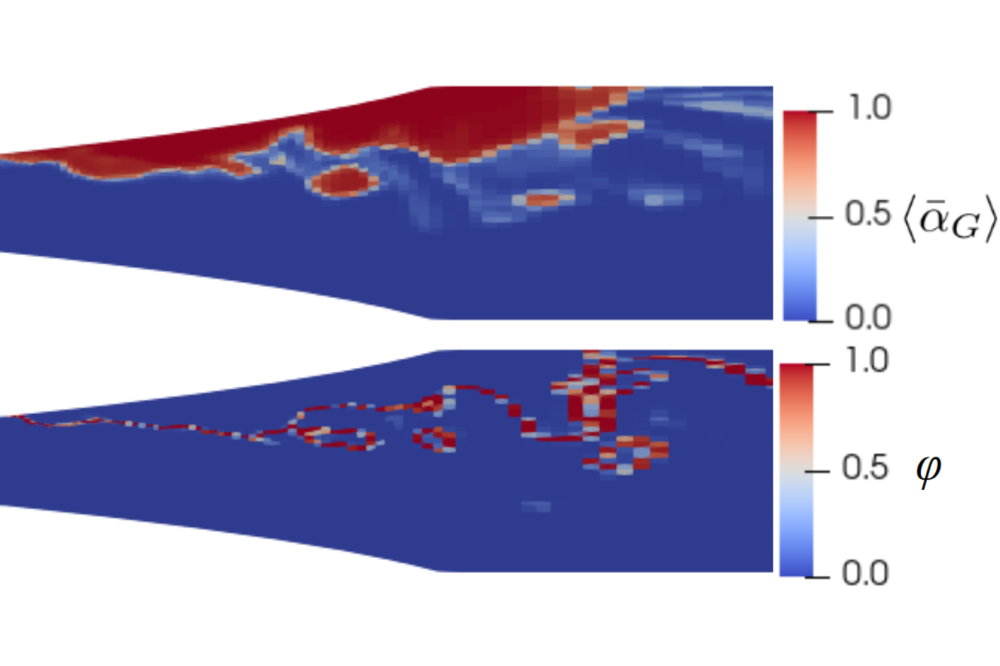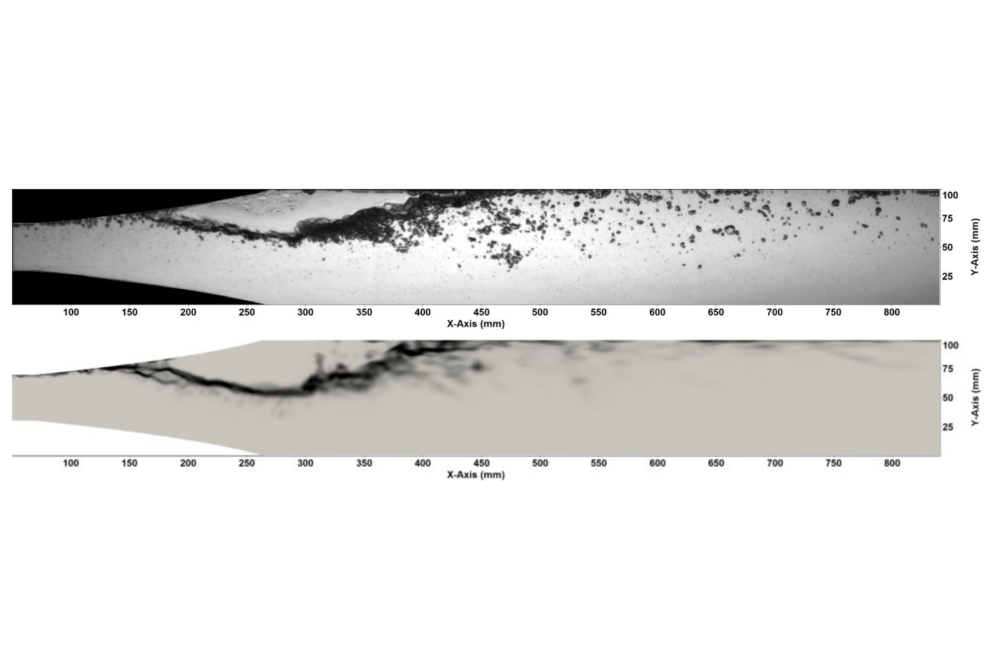Development of a Hybrid Multi-Phase Solver in OpenFOAM for Gas-Liquid Flows
Introduction
Centrifugal pumps conveying gas-liquid flows are often designed based on pure liquid flows due to a limited understanding of gas formations within a gas-liquid flow. Computational Fluid Dynamics (CFD) can provide insights into the flow characteristics, yet standard multiphase models are not able to describe a wide range of spatial scales. In this project, a hybrid multiphase model based on an Eulerian-Eulerian solver with Volume-of-Fluid (VoF) enhancements is developed, which can handle multiple flow regimes (continuous gas/liquid, disperse bubbles) at once. Preliminary tests on simple cases are conducted to evaluate the hybrid model. Then, large eddy simulations of gas-liquid flows through a diverging horizontal channel are performed to evaluate the performance of this approach.
Methods
An Eulerian-Eulerian solver within the open-source code OpenFOAM-v7, which is mainly made for disperse flow, is coupled with a Volume-of-Fluid (VOF) enhancement, which consists of a compression flux to create sharp interfaces in segregated regions. The compression flux is managed by a dynamic switch based on the volume fraction of the gas phase, such that the solver operates like an Eulerian-Eulerian solver in disperse regimes and like a VOF solver in segregated regimes. The hybrid multiphase solver is coupled with Large Eddy Simulations (LES) to investigate highly turbulent multiphase flow in a horizontal diverging channel.
Results
While sharp interfaces are present in some regions of a turbulent multiphase flow, in other regions a blurred interface as well as fully dispersed regimes are present. Therefore, it is necessary that interface compression is switched on in areas with sharp interfaces and switched off in areas with disperse regimes. With a dynamic switch managed by a blending function, interface compression is enabled when the gas volume fraction is above 0.2 and under 0.8. This is the range where a segregated flow is expected. Out of this range, the flow is expected to be disperse and therefore, the Eulerian-Eulerian method without interface compression is applied. Figure 1 shows that the dynamic switch works as expected and creates a sharp interface between the gas void and the water, but also depicts disperse regimes in the wake of the gas void. The dynamic switch allows us to compute multiphase flows where many different flow regimes occur simultaneously.
Discussion
The proposed approach can accurately capture the different flow regimes, the location of the separation point of the gas accumulation, the pressure evolution, as well as the accumulated gas volume (Figure 2). Despite the generic flow configuration, it was proven that the scale resolving simulation is important to correctly describe the gas accumulation. However, it can be observed that the model performance significantly depends on the specified bubble size. It could be shown that this parameter significantly affects the prediction of the gas accumulation, leading to an underestimation of the accumulated gas volume for small diameters and an overprediction for large diameters.
Outlook
The evaluation of polydisperse approaches, which consider a bubble size distribution and allows bubble interactions, is a logical next step for the future.





